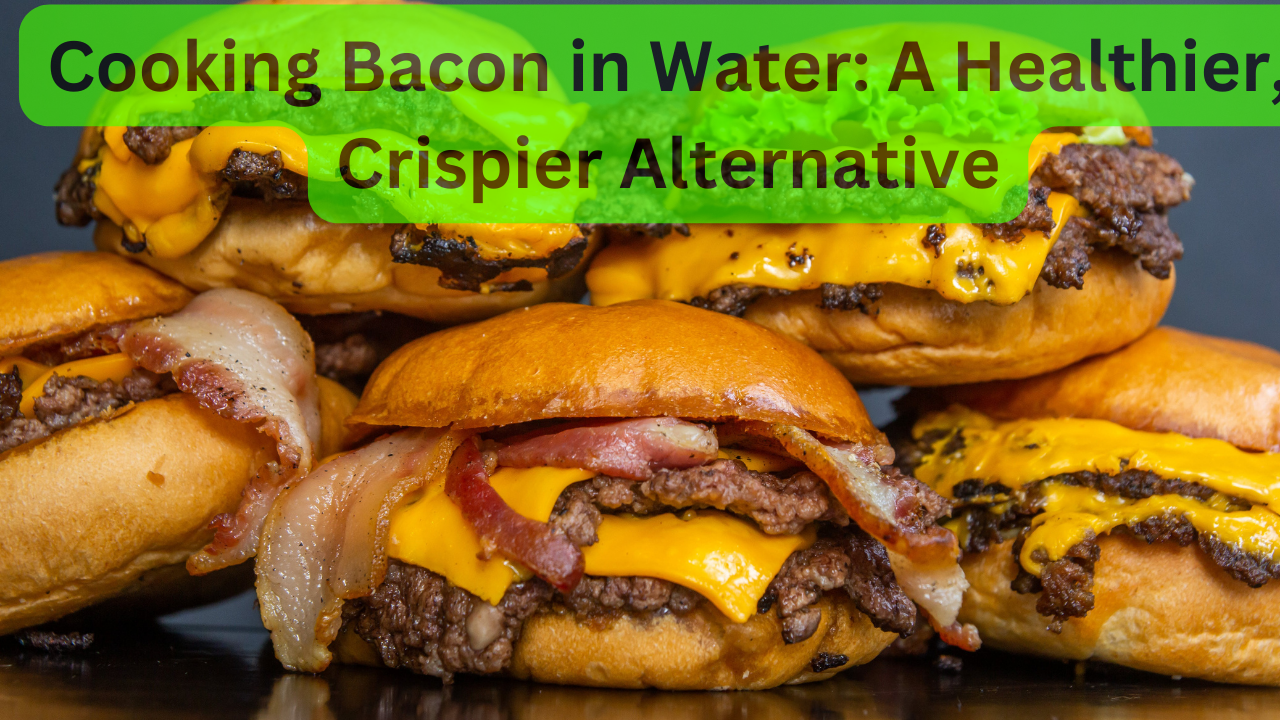When it comes to cooking bacon, the traditional method of sizzling it in a pan is a classic. But what if I told you there’s a healthier alternative that not only reduces splattering but also results in crispier slices? Yes, you heard it right—cooking bacon in water is gaining popularity for good reasons
I. Introduction
Definition of Cooking Bacon in Water
Cooking bacon in water involves simmering bacon slices in a pan filled with water instead of sizzling them directly in oil. This method provides a unique approach to achieving that perfect crispiness. It does so without the excessive grease.
Brief Explanation of the Popularity
In recent years, cooking bacon in water has been on the rise. Health-conscious individuals are looking for alternatives to traditional, often messy, bacon cooking methods. The method is not only about health but also promises a more controlled cooking process.
Thesis Statement
Cooking bacon in water isn’t just a fad; it’s a culinary innovation. This method offers a healthier alternative. It reduces fat content and minimizes harmful substances. It delivers bacon with a natural flavor, all without drowning it in additional oil or grease.

II. Health Benefits of Cooking Bacon in Water
Decreased Fat Content
One of the primary benefits of cooking bacon in water is the significant decrease in fat content. As the bacon simmers, excess fat renders out into the water, resulting in a leaner and healthier end product.
Reduction in Harmful Substances
Traditional cooking methods can produce nitrosamines, harmful compounds linked to various health issues. Cooking bacon in water helps reduce the formation of these substances. This contributes to a healthier dining experience.
Retention of Natural Flavor
Cooking bacon in water allows the bacon to retain its natural flavor without the need for additional oils or greases. This method ensures that you get the pure, unadulterated taste of bacon.
III. Improved Cooking Process with Water
Reduction in Splattering and Mess
One of the nuisances of cooking bacon is the inevitable splattering of hot grease. Cooking in water minimizes this mess, making the process cleaner and more enjoyable.
Even Cooking and Prevention of Burnt Spots
Water provides a more even cooking environment, preventing burnt or undercooked spots on the bacon. This ensures a consistent texture throughout every slice.

Retained Moisture for Crispier Texture
Contrary to the fear of waterlogged bacon, this cooking method retains moisture. It contributes to a crispier and more tender texture compared to traditional frying.
IV. Step-by-Step Guide to Cooking Bacon in Water
Selecting the Right Pan and Adding Water
Begin by choosing a pan large enough for the bacon slices. Fill it with enough water to submerge the bacon.
Bringing Water to a Boil and Adding Bacon
Bring the water to a boil and carefully add the bacon slices. Ensure the bacon is fully submerged.
Monitoring and Adjusting Cooking Time
Monitor the cooking process, adjusting the time based on your desired level of crispiness. This method allows for customization, catering to individual preferences.
Draining Excess Water and Searing for Browning
Once the bacon is cooked, drain excess water and briefly sear the slices in the pan for added browning. This step enhances the visual appeal and flavor.
V. Common Misconceptions and Concerns
Affecting Taste Negatively
Contrary to belief, cooking bacon in water doesn’t negatively affect its taste. If anything, it preserves the natural bacon flavor without the interference of additional fats.
Water Diluting Bacon Flavor
There’s a common misconception that water will dilute the bacon flavor. In reality, the water serves as a cooking medium, allowing the bacon to maintain its rich taste.

Concerns About Waterlogged or Chewy Texture
Some may worry about ending up with waterlogged or chewy bacon. Properly draining the excess water and searing the bacon addresses these concerns. This results in a perfect balance of crispiness and tenderness.
you are interested in : A Guide to Kid Friendly Dinner Delights
VI. Conclusion
Recap of Benefits
In conclusion, cooking bacon in water is more than just an alternative method; it’s a game-changer. The benefits, which include decreased fat content, reduced harmful substances, and improved texture, make it a worthwhile culinary experiment.
Encouragement for Readers
I encourage you to step out of your bacon-cooking comfort zone and give this method a try. It might just become your go-to approach for enjoying bacon with a healthier twist.
Final Statement on Versatility
The versatility of cooking bacon in water opens up a world of possibilities for bacon enthusiasts. From breakfast sandwiches to salads, this method can be incorporated into various dishes.

